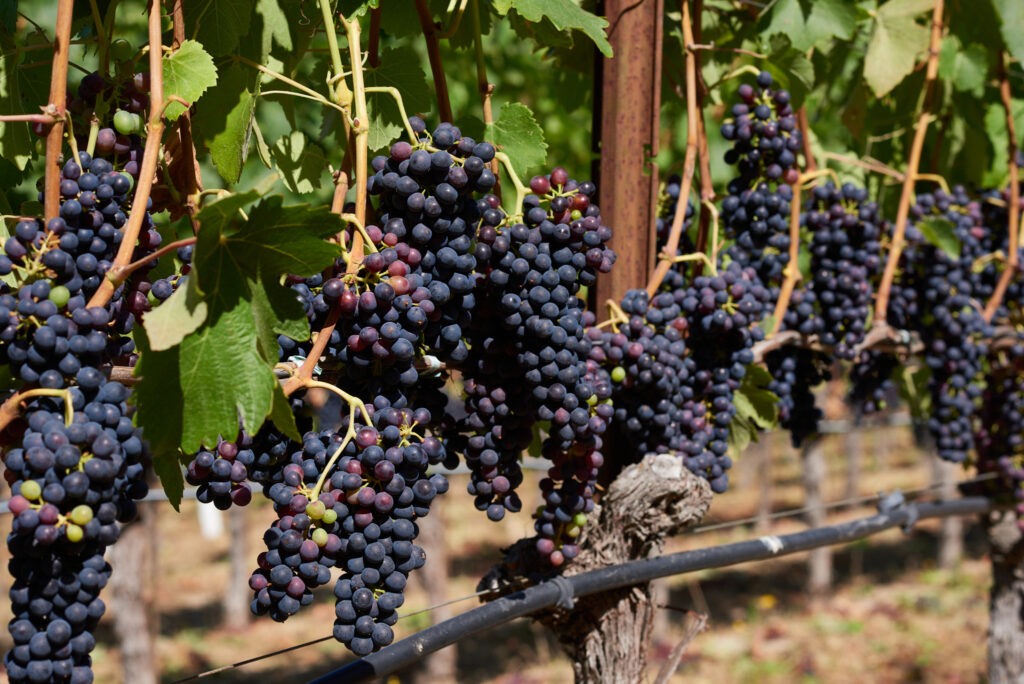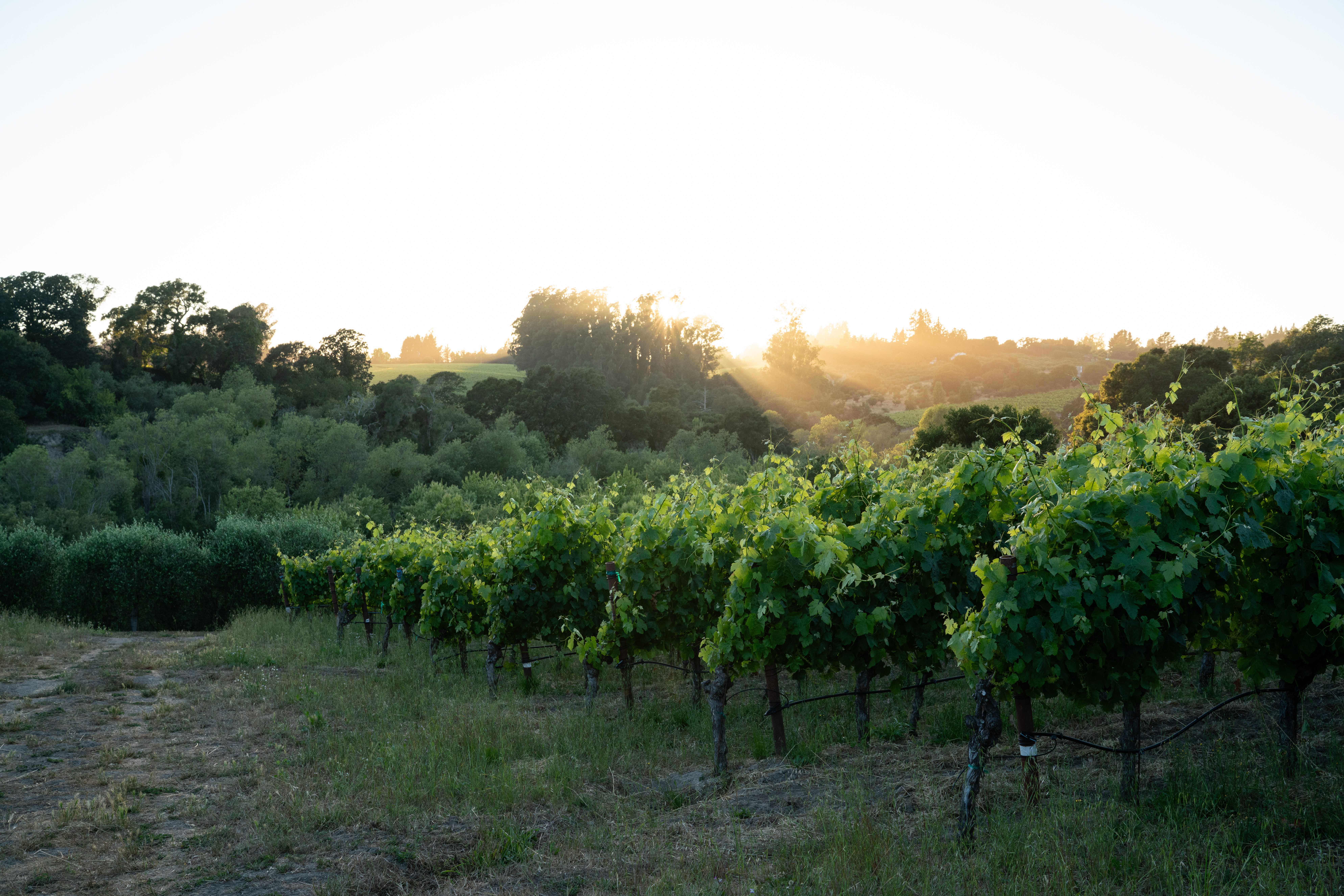The Singer Baker Lane Estate Cool Climate Syrah Project
In the world of wine (as in other realms where aesthetics and commerce converge), there are many descriptive terms and catchphrases that gain traction. Instead of providing clarification, though, sometimes these expressions themselves are much subject to interpretation. As examples, consider the following: Is that ‘spicy’ salsa going to be equally spicy to every eater? Is the ‘modern’ architecture of Frank Lloyd Wright still modern? Is that a ‘chic’ black T-shirt , or just an expensive piece of underwear worn as dress-up clothing?
Similarly, when it comes to the meaning of ‘cool climate Syrah’ and how that stamps a resulting wine, the question arises, “cool compared to what?” Pondering this as a staunch advocate for Syrah wines of this type, I invariably harken back to my San Francisco wine retailer days in the early 1980’s. My store was initially conceived as overwhelmingly focused on European wines. Consistent with that slant, I was passionate for the great Syrahs grown in France’s northern Rhone River valley. Suffice to say, this entailed a deep skepticism towards most Syrah iterations grown elsewhere, in particular California. My chauvinism felt lastingly cemented after tasting one of the first noteworthy California versions released to the market. This wine was grown and produced in Napa by an acclaimed winery, an estate particularly esteemed for their prowess with Cabernet. This much heralded wine, though, lacked any alluring perfume, had muddy flavors, and was ponderously alcoholic. If this was what to expect from California Syrah from a powerhouse winery, I saw no future for the grape in this state.
As fate would have it though, it wasn’t much later that Bob Lindquist, the talented winemaking proprietor at Qupe Winery in Santa Barbara county first showed up at my door. He quietly poured his 1984 Syrah for me to taste at the same time that I had a Clape Cornas of similar age open at our tasting bar. Before tasting the wines together, I imagined the humbling experience that I soon expected to be his. While I can’t say that Bob’s Syrah was the peer of this exemplar of the northern Rhone, it was revelatory to note their similar distinctions: they shared pretty violet scented fruit aromatics with a lively sense of spice and overall balance. Although California’s wine industry was beyond embryonic forty years ago, the current understanding that we now have about how to match a site with specific varietals was then still just developing. That the fruit for Bob’s wine was grown in a significantly cooler zone than Napa (where Cabernet was otherwise triumphant) was elemental to its delicious character. This was impossible to ignore. What followed from the efforts of folks like Bob, Jim Clendenen, and other pioneering west coast vintners was the breakdown of ‘the one size (i.e. one climate model) fits all’ approach to advancing wine production throughout California. In surveying this unfolding viticultural narrative (coupled with extensive travels to wine growing regions around the world), it was profoundly illustrated how climate (and site) are immutable factors in forming a wine’s identity.
Below I’ve listed some of the insights that have guided California viticulture (and in particular Syrah aficionados like us) over these last decades, practices that have engendered extraordinary leaps in the quality and character that California wines can now bring to the table.

- Grape selections that ripen early in a particular site are not good choices for producing wines of complexity and energy.
- Some grape varieties really do require lots of heat units to achieve full maturity. For example, consider those from Bordeaux (Cabernet, Merlot, etc.) or the Southern Rhone (Grenache). At the same time, other cultivars benefit from longer, cooler journeys towards harvest. In California, Pinot Noir looms as the precedent setting example of this but, Syrah provides even more dispositive confirmation of this truth.
- It’s indispensable to identify the distinguishing features of grapes that have time honored connections to the various regions in Europe (e.g. Riesling in Germany and Alsace, Chardonnay in Burgundy, Sangiovese in Tuscany, Tempranillo in Rioja, to cite a few). In choosing whether it would be fruitful (pun intended) to cultivate them in a given growing region in California, winegrowers are well-served to carefully curate the relationship between grape and site, seeking climatic and soil congruences that comport successfully with the historical precedents.
- It is true to assert that California fine wine growing, particularly for those aspiring to produce grapes with complexity and finesse, is steadily moving towards cooler growing areas. A grape that reaches full development by ‘hanging’ on the vine as long as possible without becoming overripe is the money shot for deep flavors and overall balance.
- No doubt, Syrah is grown in some pretty warm places, for example Australia, California’s inland regions and valleys and parts of Spain. It is also grown in markedly cooler places, including most of the Rhone Valley. In exploring the wildly different character it can evince from these respective viticultural areas, that it is one of the most ‘transparent of site’ of any grape varietal is evident. In other words, Syrah vividly translates the predominant climate conditions of where it is grown. Warmer areas will tend to render jammy dense wines, while cooler conditions will potentiate more aromatically nuanced, complex and energetic wines.
- Growing Syrah here in west Sonoma County, an area previously dominated by Pinot Noir and Chardonnay vines, has yielded impressive results. Syrah’s ability to tolerate early autumn rains provides the opportunity for it to spend enough time on the vine to achieve global flavor development. In doing so, it can be imbued with intricate and detailed flavors, lush color expression, excellent acid retention and finely proportioned tannic structure. These are the building blocks for making wines of character, expression of terroir and ageability.
In sum, this is why we champion the ‘cool climate’ character of our grapes. It is obviously driven by preferences for a certain version of depth and balance. More importantly, though, it reflects our commitment to the concept of winegrowing. Building flavor from our carefully tended patch of vines remains one of the most illuminating illustrations that we can possibly imagine of how the land connects to the table.


